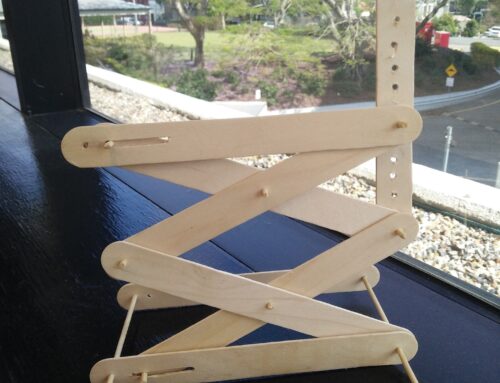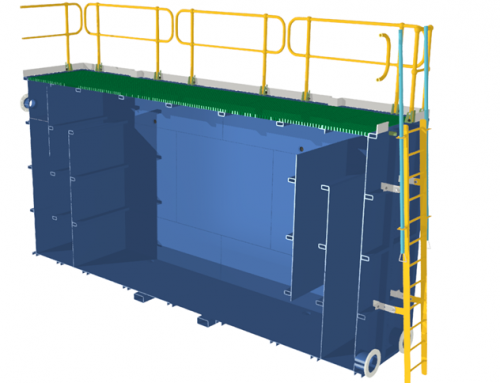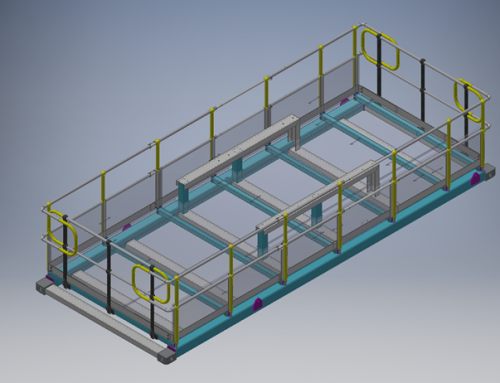Project Deep Dive – 610 bar Hydrostatic Testing Vessel
Do we know more about the surface of Mars than the underwater surfaces on Earth?
It’s often quipped that this is the case as sources suggest that over 80% of Earth’s ocean is unmapped. Some of the challenges in exploring the ecosystems and environments at the great depths of Earth’s oceans are the enormous hydrostatic forces that are at play on the research equipment that venture to these depths. When operating for often year-long periods at a time without re-surfacing, it’s critical to ensure the integrity of equipment prior to commissioning it at sea.
Practical Engineering Australia (PEA) were engaged by CSIRO in 2017 for the design and manufacture of a pressure vessel to AS 1210 that would enable the hydrostatic testing of deep-sea equipment that are used for such research. The pressure vessel would be capable of replicating the sub-sea hydrostatic pressures of 60,000 kPa(g) / 8,700 psi(g) experienced at 6 km below sea level for testing equipment within an envelope of 2,000 mm length and 350 mm diameter, while fitted with a quick opening closure for efficient vertical access and improved operability.
To contain high pressures at 350 mm internal diameter, the vessel shell thickness required nominally 100 mm of material formed with high strength duplex and stainless steels. The use of these materials not only provided strength, but also ductility and corrosion resistance for the required application and service life. Challenges with forming thick plate and quality reduction factors associated with castings lead to the choice to move forward with forged construction. Forgings were Australian-sourced and supplied with green by Ferrous Forgings.
To ensure the forgings were defect-free, non-destructive test (NDT) methods were applied. Where radiography would typically be applied, it was determined that the isotopes traditionally used would not have the capacity to identify defects through forgings upwards of 60 mm in thickness. Phased array ultrasonic testing was adopted and used in lieu of radiography with success. All pre and post fabrication machining was supported by @Shute Upton Engineering and the vessel forgings were seam welded by Brosco Enterprises.
Weld procedure qualification was completed with two sets of supplied 100 mm forgings which were also used for subsequent NDT calibration tests. Despite employing a suitable J-preparation in lieu of a V-preparation, 280 runs were required per seam weld, equivalent to laying nominally 395 m of weld material per seam.
Due to varying heat, metallurgy and welding parameters at play we engaged Explicom to understand the complex metallurgical effects of the process and the weld preparation.
After successful qualification of the weld procedure, arduous welding requirements demanded maintaining each seam weld at an elevated interpass temperature over multiple consecutive 24-hr periods while welding was completed.
PEA also completed the design of the quick opening closure to AS 1210 which, at design pressure, resists a hydrostatic load of nominally 600 t. The closure consists of four duplex steel locking plates and a specially designed internal machining feature to distribute significant stresses developed by the locking mechanism.
Successful hydrostatic testing of the vessel was completed at nominally 87,000 kPa(g) / 12,600 psi(g) prior to shipment of the vessel to CSIRO’s Hobart facility, where the vessel is now regularly engaged to verify the integrity of deep-sea research equipment.
PEA is incredibly proud of the work completed in partnership with Australian-owned local businesses to overcome many engineering and manufacturing challenges. Projects such as these help us recognise that when we work together, we can overcome great challenges; we can set our sights on the stars, or Mars.
Please contact PEA on (07) 3875 2133 if you would like to know how we can work with you to overcome your mechanical, process or structural challenges, or if you would like to know more about this project.






